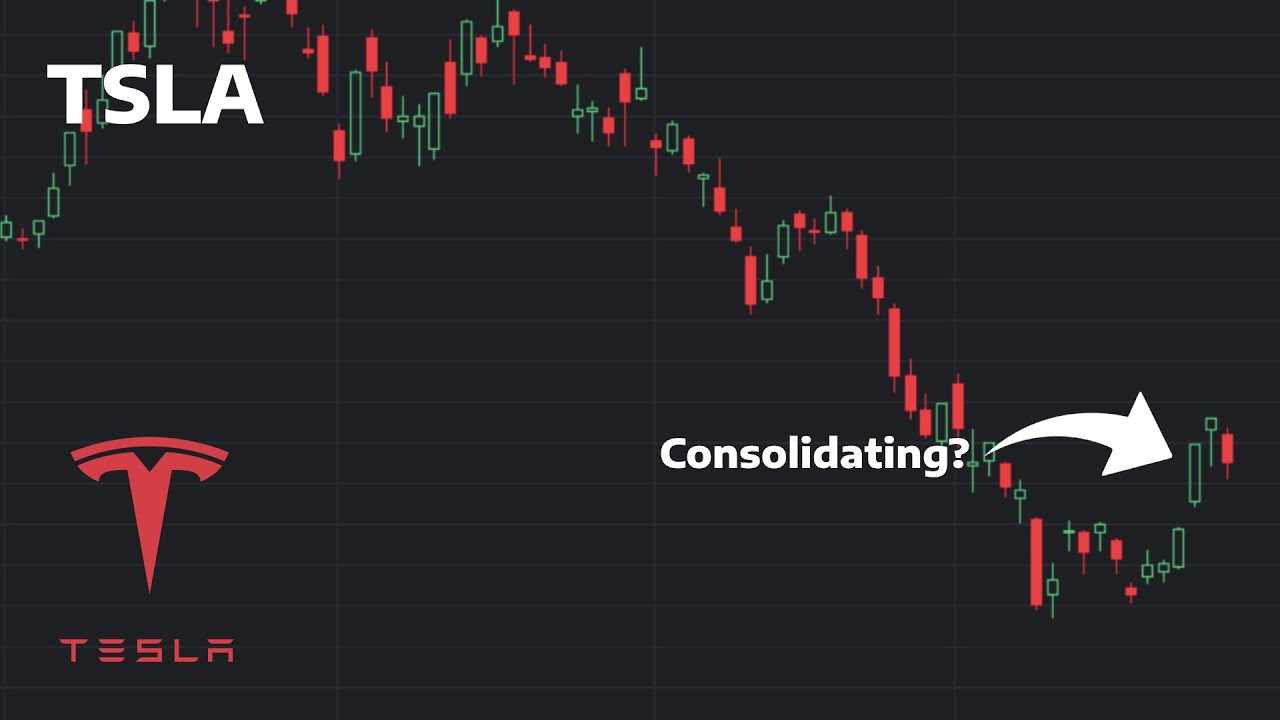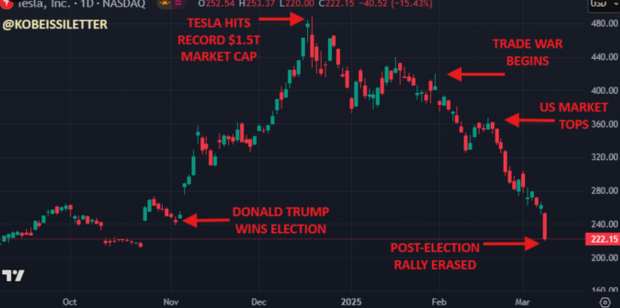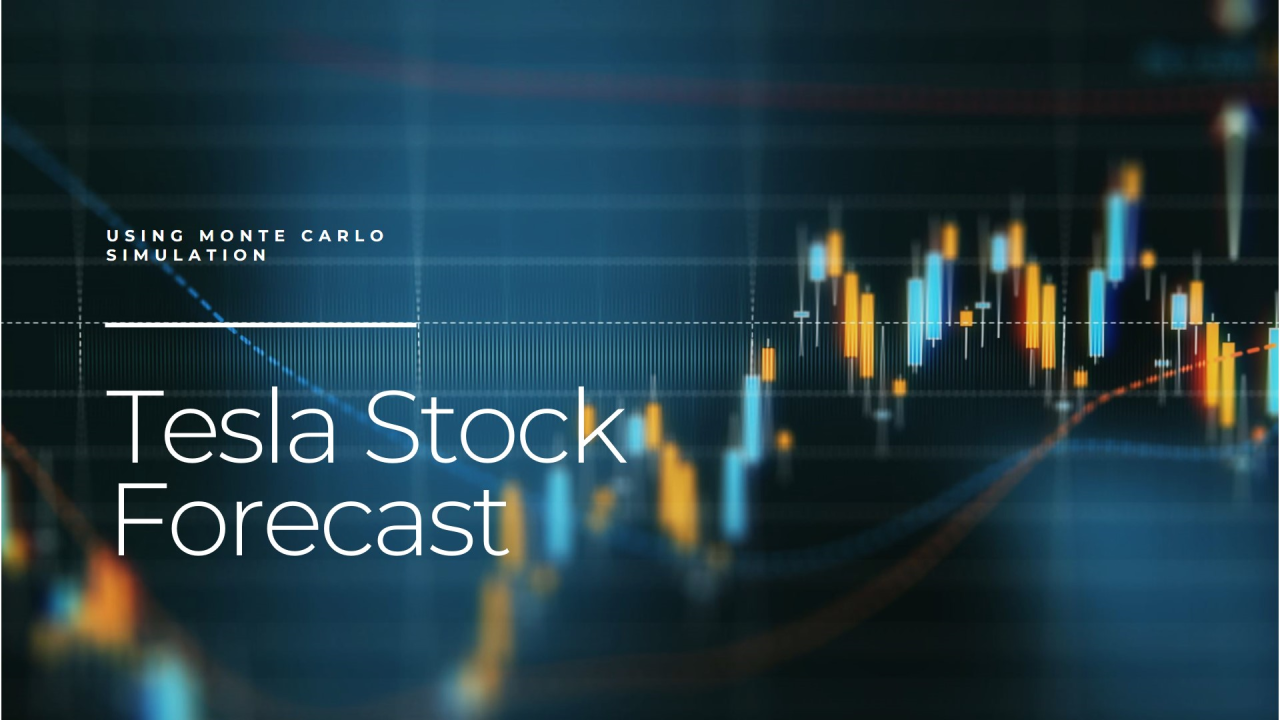Table of Contents
ToggleTesla Stock Crash 2025
Tesla Inc. (TSLA) has long been a beacon in the electric vehicle (EV) and clean energy sectors, captivating investors with its innovative approach and market dominance. However, as of April 7, 2025, the company’s stock is experiencing significant turbulence. This article delves into the current state of Tesla’s stock, the ramifications of recent tariff disputes, and offers a comprehensive analysis of the pros and cons of investing in TSLA. Additionally, it provides strategic guidance on optimal buying and selling times, explores dividend policies, and addresses common investor questions.

Current Price and Market Performance
Recent Stock Performance
As of April 7, 2025, Tesla’s stock is trading at $233.73, reflecting a decline of approximately 2.38% from the previous close. The day’s trading has seen a high of $250.98 and a low of $214.34, indicating notable intraday volatility. This fluctuation underscores the market’s sensitivity to both company-specific developments and broader economic indicators.
Market Reactions to Tariff Issues
Recent tariff implementations have notably impacted Tesla’s stock performance. The U.S. administration’s decision to impose a 25% tariff on imported cars and parts has raised concerns about increased production costs for automakers, including Tesla. Although Tesla manufactures vehicles domestically, it relies on a global supply chain, sourcing components from countries such as China. These tariffs could elevate production costs, potentially affecting profit margins and consumer pricing.
Understanding the Reciprocal Tariff Issue
Overview of Recent Tariffs
In an effort to bolster American manufacturing, the U.S. administration announced a baseline 10% tariff on numerous trade partners, with additional country-specific tariffs to follow. China, in response, imposed a 34% tariff on U.S. goods and implemented other retaliatory measures, escalating trade tensions between the two nations.
Impact on Tesla’s Supply Chain
Tesla’s intricate supply chain, which includes significant reliance on international components, is vulnerable to these tariff escalations. The increased costs associated with imported parts may compel Tesla to adjust pricing strategies, potentially passing costs onto consumers or absorbing them, which could impact profitability. This scenario presents a complex challenge for Tesla as it strives to maintain its competitive edge in the EV market.
Elon Musk’s Response and Public Disputes
Elon Musk, Tesla’s CEO, has publicly criticized the tariff policies, advocating for a zero-tariff trade zone between Europe and North America. His opposition has led to a public dispute with White House trade adviser Peter Navarro, who suggested that Musk’s stance is primarily driven by self-interest due to Tesla’s global supply dependencies. This exchange highlights the broader debate on protectionism versus free trade within the current economic climate.

Pros of Investing in Tesla Stock
Innovative Product Line and Market Leadership
Tesla has established itself as a leader in the EV market, renowned for its innovative product lineup, including the Model S, Model 3, Model X, and Model Y. The company’s commitment to advancing battery technology and autonomous driving capabilities positions it at the forefront of the industry. This innovation fosters brand loyalty and sets high barriers to entry for competitors.
Strong Revenue Growth and Profitability
Tesla has demonstrated robust revenue growth over recent years. The company’s focus on expanding production capacity and entering new markets has contributed to this upward trajectory. Additionally, Tesla has achieved consistent profitability, reflecting its operational efficiency and market demand.
Expansion into New Markets and Technologies
Beyond electric vehicles, Tesla is diversifying into energy storage solutions and solar energy products, tapping into the growing demand for sustainable energy. The development of the Tesla Semi and Cybertruck indicates the company’s ambition to penetrate new vehicle segments, potentially opening additional revenue streams and solidifying its market presence.
Cons of Investing in Tesla Stock
High Valuation and Market Volatility
Tesla’s stock is characterized by a high price-to-earnings (P/E) ratio, reflecting significant growth expectations. This elevated valuation can lead to substantial price volatility, influenced by market sentiment, company performance, and external factors such as interest rate changes or geopolitical tensions.
Regulatory and Competitive Challenges
Tesla operates in a highly regulated environment, where changes in emissions laws, safety standards, and trade policies can dramatically impact business. As governments globally tighten EV regulations and introduce new standards, Tesla must constantly adapt, often at high costs. Moreover, competition in the EV market is intensifying. Legacy automakers and new entrants are investing heavily in electric vehicles, posing challenges to Tesla’s market share.
Dependence on Key Personnel
Tesla’s success is closely tied to the vision and leadership of Elon Musk. While his involvement drives innovation, it also introduces risks. Any misstep or unexpected departure could trigger significant market reactions. Tesla’s reliance on Musk underscores the importance of developing a robust leadership team for long-term stability.
Dividend Policy
Current Stance on Dividends
Tesla does not pay dividends and has stated that it intends to retain all future earnings to finance growth. The company does not anticipate paying any cash dividends in the foreseeable future.
Future Prospects for Dividend Payments
Given Tesla’s focus on expansion and innovation, it is unlikely that the company will initiate dividend payments soon. Investors seeking regular income may need to consider other investment opportunities, as Tesla prioritizes reinvesting profits to fuel growth and maintain its competitive edge.
Investment Strategies
Long-Term Investment Considerations
Tesla is often viewed as a long-term growth stock. Investors who believe in the future of EVs, sustainable energy, and autonomous vehicles may consider holding Tesla shares for an extended period. However, they should be prepared for significant price
Short-Term Trading Opportunities
For short-term traders, Tesla’s high volatility presents both opportunities and risks. Due to its frequent price swings—driven by news, earnings reports, or even Elon Musk’s tweets—Tesla can be a profitable stock for swing traders and day traders. However, these quick movements require precision timing and solid technical analysis skills. Misjudging market sentiment or reacting too slowly can lead to substantial losses.
Traders often look for breakout patterns, moving averages, RSI (Relative Strength Index), and MACD (Moving Average Convergence Divergence) indicators to enter and exit positions. Tools like stop-loss and take-profit orders are critical to protect capital and lock in gains. But be warned: Tesla is unpredictable, and its shares often defy traditional logic. Always factor in the risk and only invest what you can afford to lose when trading this high-octane stock.
Buy and Sell Timing: When is the Right Time?
Timing your Tesla investment is crucial. Here’s a simple framework:
-
Buy Tesla stock when:
-
There’s a significant dip after an overreaction to temporary bad news.
-
Positive earnings reports or forecasts are released.
-
New product launches or partnerships are announced.
-
Regulatory support for EVs increases globally.
-
-
Sell Tesla stock when:
-
The valuation becomes extremely inflated beyond industry norms.
-
There’s negative news regarding Elon Musk’s involvement or major recalls.
-
Macroeconomic headwinds like rising interest rates hurt growth stocks.
-
A good practice is dollar-cost averaging—buying a fixed dollar amount at regular intervals. This helps reduce the impact of market volatility.
Is Tesla a Good Stock to Buy Right Now?
This question doesn’t have a one-size-fits-all answer, but here’s how to think about it:
Yes, it is—if you:
-
Believe in long-term growth in EVs and Tesla’s dominance.
-
Can tolerate high volatility and risk.
-
Are not looking for short-term income via dividends.
No, it isn’t—if you:
-
Want stable, income-generating blue-chip stocks.
-
Prefer low-volatility, conservative investments.
-
Lack the risk appetite or time to monitor market movements.
Tesla remains a speculative growth stock. If you’re bullish on renewable energy, global electrification, and AI-driven automation, it can be a core part of your portfolio. But diversification is key—never go all-in on a single stock.
Tesla vs. Competitors
To fully evaluate Tesla, compare it with other major EV and auto industry players:
| Company | Market Cap (Approx.) | P/E Ratio | Dividend | Strengths | Weaknesses |
|---|---|---|---|---|---|
| Tesla | $750B+ | High | No | Innovation, brand loyalty, tech edge | Volatility, valuation, dependency on Musk |
| Toyota | $250B+ | Low | Yes | Legacy strength, hybrid tech | Slower EV transition |
| BYD | $100B+ | Moderate | Yes | Dominance in China, battery innovation | Less known globally |
| Ford | $50B+ | Low | Yes | Established dealer network, F-150 EV | Struggles with profitability |
| Rivian | $10B+ | Negative | No | Backed by Amazon, new-gen designs | Limited production scale |
Tesla clearly leads in innovation and branding, but newer companies like Rivian or legacy automakers like Toyota are catching up. The race is heating up, and only time will tell how the market reshapes.
Tesla’s Vision and the Road Ahead
Elon Musk’s vision is bold. Tesla’s mission to “accelerate the world’s transition to sustainable energy” drives its push into solar energy, battery storage, AI, and even humanoid robots like Optimus. It’s no longer “just” a car company.
The development of Dojo (Tesla’s AI training supercomputer), FSD (Full Self-Driving), and the potential launch of a $25,000 budget EV could redefine the industry. Meanwhile, expansion in markets like India and continued Gigafactory rollouts keep the company globally relevant.
However, each bold move also carries risk—regulatory scrutiny, technical failures, or unmet deadlines could shake investor confidence. While Tesla’s future is packed with potential, it demands patience and nerves of steel from its investors.
Conclusion
Tesla’s stock is as electrifying as its vehicles—high speed, high risk, and high reward. Whether you’re a long-term believer in Musk’s vision or a short-term trader chasing momentum, understanding the dynamics at play is crucial.
Current market dips may scare off timid investors, but for those with a bold vision, they might just be the perfect buying opportunity. With massive innovation, strong growth prospects, and an ever-expanding product ecosystem, Tesla remains one of the most talked-about and watched stocks on the planet.
Just remember—invest with your eyes wide open, your risk managed, and your long-term goals in mind.
FAQs
1. Why is Tesla stock falling recently?
Tesla’s stock has been impacted by recent trade tariffs, slowing EV demand in key markets, and high production costs. Investors are also reacting to broader market volatility and earnings expectations.
2. Does Tesla pay dividends?
No, Tesla does not pay dividends and plans to reinvest profits into growth and innovation. It’s a classic growth stock.
3. Is now a good time to buy Tesla stock?
That depends on your risk tolerance and investment horizon. If you believe in the long-term EV transition, current price dips could be attractive.
4. How does Tesla compare with other EV companies?
Tesla leads in innovation, brand strength, and global reach, but faces rising competition from companies like BYD, Rivian, and legacy automakers like Toyota.
5. What are the main risks of investing in Tesla?
High volatility, regulatory risks, supply chain issues, and heavy reliance on Elon Musk’s leadership make it a high-risk, high-reward investment.
Please don’t forget to leave a review.
